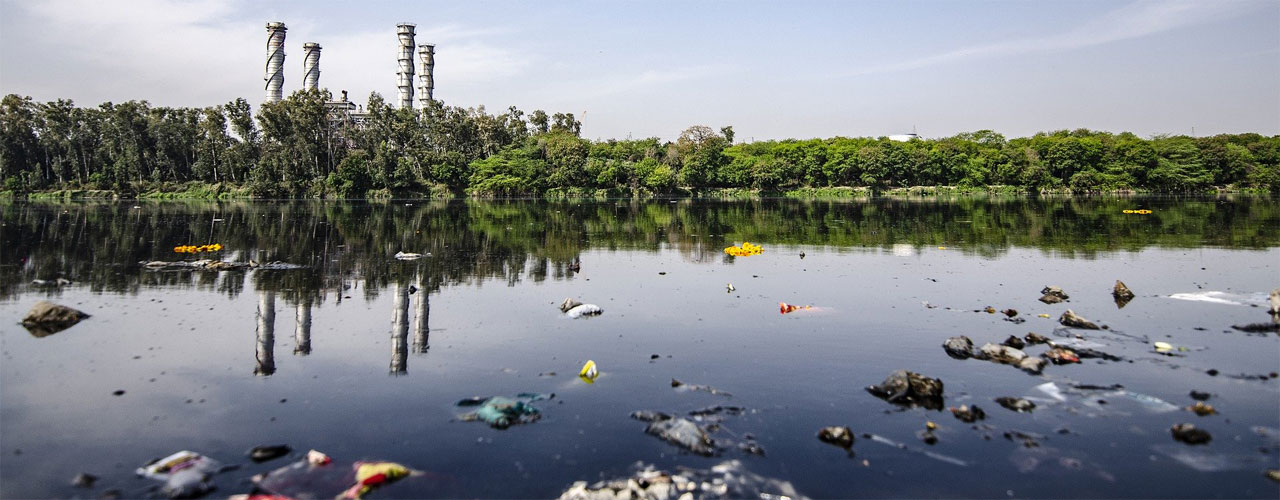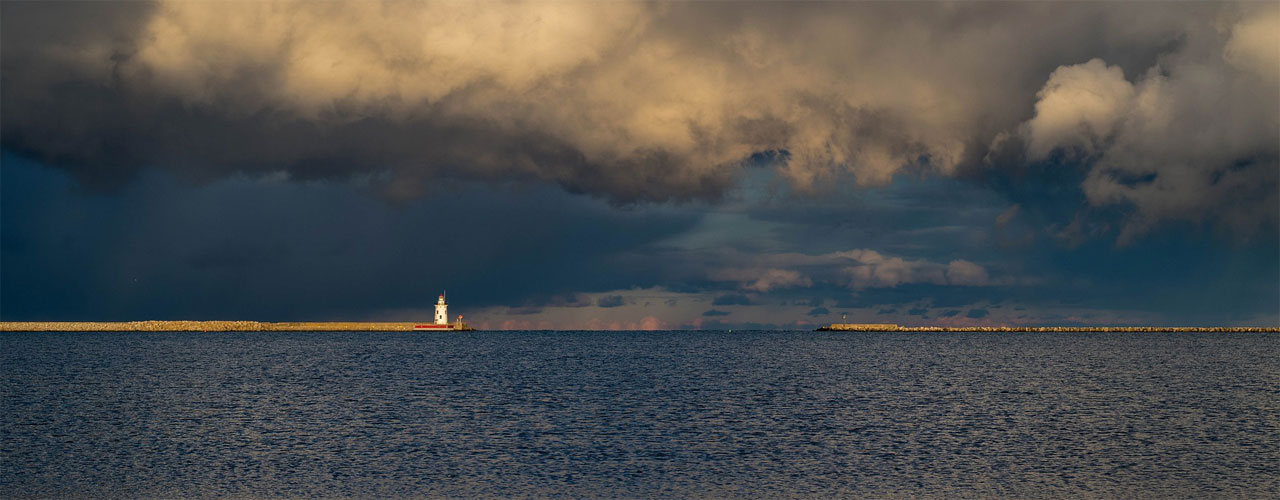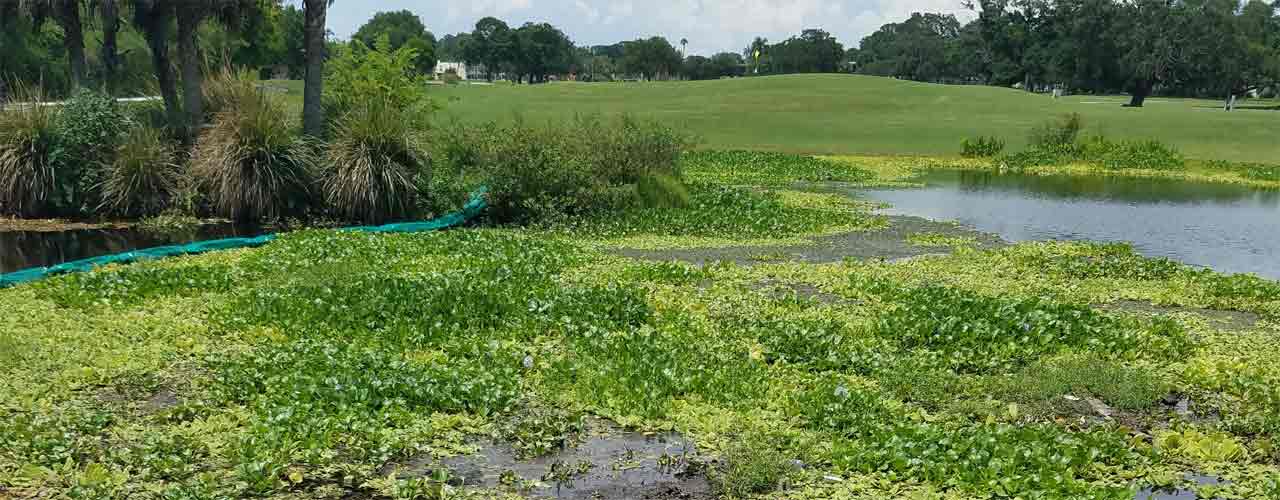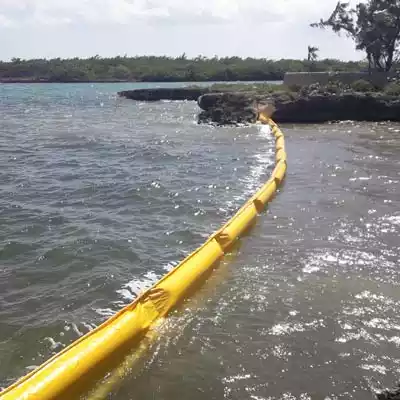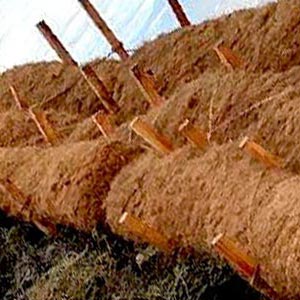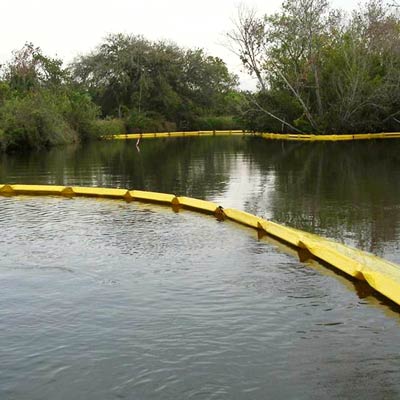Polluted Lake Debris, Turbidity, and Erosion
Lake pollution often results from construction activities, accidental spills, or stormwater runoff that carries contaminants into the water. Sediment buildup from erosion can make the lake water cloudy with silt, a condition known as turbidity. This limits sunlight penetration, disrupting aquatic plant growth and reducing habitat quality for fish and wildlife. In addition to sediment, pollution can introduce plastics and encourage the spread of invasive aquatic weeds. These materials create floating debris that must be contained and removed to help maintain a healthier ecosystem.
Types of Lake Pollution Overview:
Lake pollution can lead to costly compliance penalties under the Environmental Protection Agency’s Clean Water Act. Beyond regulatory concerns, polluted lakes also harm surrounding ecosystems and water quality. To restore a lake’s health, tailored solutions are often required based on site-specific conditions. Common approaches include erosion control, turbidity management, targeted dredging, and containment of floating debris. Implementing the right combination of these methods helps reduce pollution levels and supports long-term environmental recovery.
Lake Pollution Solutions:
- Turbidity Curtain
- Silt Fence
- Staked Turbidity Barrier
- Dewatering Bags
- Geotextile Tubes
- Dewatering Socks
- Coir Logs
- Erosion Control Logs
- Erosion Cotrol Matting
- Floating Containment Boom
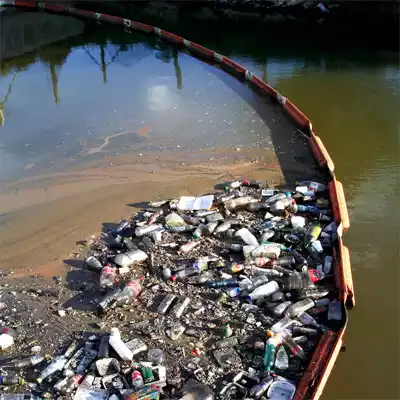
Healing Your Polluted Lake
Lake Debris Containment
Lake debris can originate from several different avenues. Perhaps visitors are leaving their litter and trash around a public lake. This litter makes its way into the water to become floating debris. Maybe stormwater runoff has brought plastic pollution into the lake environment. Or, consider a third option. Aquatic plants and weeds have sprung up on your lake reducing the oxygen levels in the lake, killing off other species. Maybe these plants are so excessive that it is impossible to move around. Whatever your situation with your polluted lake, there are lake pollution solutions that can help.
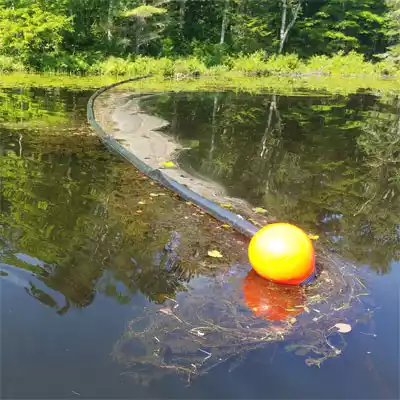
A lake pollution solution needed here is a floating debris containment boom. Litter, plants, and other lake debris can be directed and contained with a floating boom, facilitating cleanup and containment for other forms of removal. Using a floating boom in conjunction with a floating trash skimmer will enable you to trap smaller items easily left and seldom caught by humans but often ingested by marine animals. Items like microplastics, cigarette butts, and pieces of Styrofoam can be caught by the Seabin in calm water, docked locations. When you catch these items, you stay in compliance, clean your polluted lake, and keep marine critters safe. It's a win-win-win.
Lake Erosion Restoration
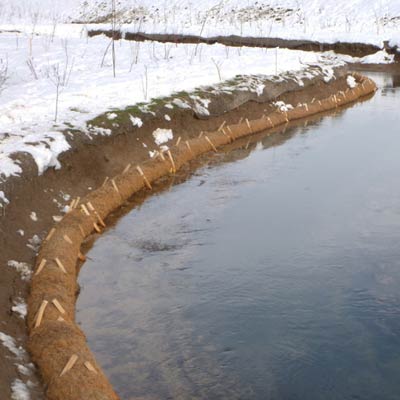
Lake erosion restoration is needed when the shores of your lake are unstable, eroding, and, generally, unsafe. Bring stability back to your lake with lake erosion control methods. Coir logs and coir mats are durable lake erosion control methods that build into existing structures, allowing for vegetation and soil stabilization. These biodegradable erosion control methods will naturally break down over a period of 2-to-5 years and are resistant to rust as well as rot, even though they are used on lake shores where they could be constantly in contact with water. Coir mats and coir logs are easy to install and all-natural. They provide you with lake erosion restoration to keep your lake shore stable and accessible.
Oftentimes, lake erosion restoration is also accompanied by lake sediment pollution as well. With erosion comes moving and unsettling sediment that clouds lake waters, creating a murky, turbid environment. This lake turbidity negatively impacts our drinking water supply, the lake's natural vegetative growth, and the surrounding wildlife.
Lake Turbidity and Sediment Control
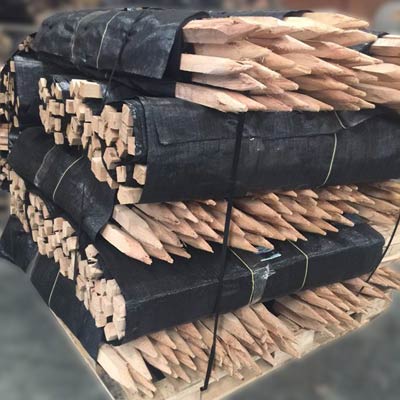
The best option for handling lake turbidity is prevention. It's better to practice sediment control on land before sediment pollution can spread to a water body. Some sediment control methods are silt fence and staked turbidity barrier. They are often used for perimeter erosion control for lake construction sites, and they both carry unique benefits. For instance, a black silt fence is used for filtration, letting water flow freely from a site while retaining silt and sediment onsite. As a lake pollution solution, a silt fence will keep sediment from infiltrating your lake waters, causing lake turbidity. A yellow staked turbidity barrier, however, provides perimeter sediment control without the filtration. The staked turbidity barrier redirects stormwater while preventing the spread of sediment.
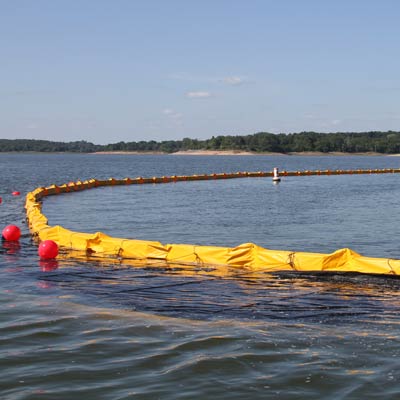
But what about when silt and sediment are already in the water? If your polluted lake is murky and turbid, then you might consider a turbidity curtain. Depending on site conditions, you'll need to consider if you need a Type 1 turbidity curtain, Type 2 turbidity curtain, or Type 3 turbidity curtain. The type 1 turbidity curtain is for calm water locations with no waves, type 2 turbidity curtain is for moving waters, and type 3 turbidity curtain is for fast moving water locations with tides and currents. With the right turbidity curtain for your lake turbidity, the silt and sediment will have time to settle to the bottom.
Lake Dredging Sludge Filtration
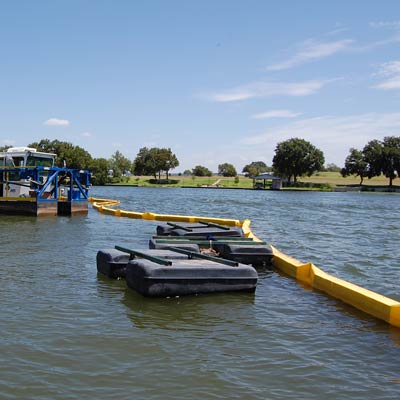
Lake dredging is a water pollution solution that will remove the silt and sediment that has settled to the bottom of your lake. Dewatering bags and geotextile tubes offer filtration for dredged sediment and sludge. Our dewatering products can handle a variety of lake dredging applications and job sizes. The dewatering bag is best used for smaller to mid-sized dewatering projects. Dewatering bags, made from non-woven geotextile fabric, are great sturdy lake pollution solutions. Geotextile tubes, made from woven geotextile fabric, provide large-scale sludge filtration.
Lake pollution can result from a variety of human and natural sources. Common contributors include littering, runoff from construction sites, stormwater, and shoreline erosion. These factors can introduce excess sediment, organic sludge, debris, and pollutants into the water. To address these issues, effective solutions include using containment booms, turbidity curtains, and erosion control products to help protect water quality and surrounding ecosystems.
Several tools are available to help manage lake pollution. Turbidity curtains, silt fences, and staked barriers can control sediment and turbidity. Coir logs and erosion control mats can stabilize shorelines and prevent further erosion. Floating containment booms can help capture and manage surface debris. Dewatering bags and geotextile tubes provide options for managing dredged materials and filtering out contaminants. Choosing the right combination of these products depends on your site conditions and restoration goals.

